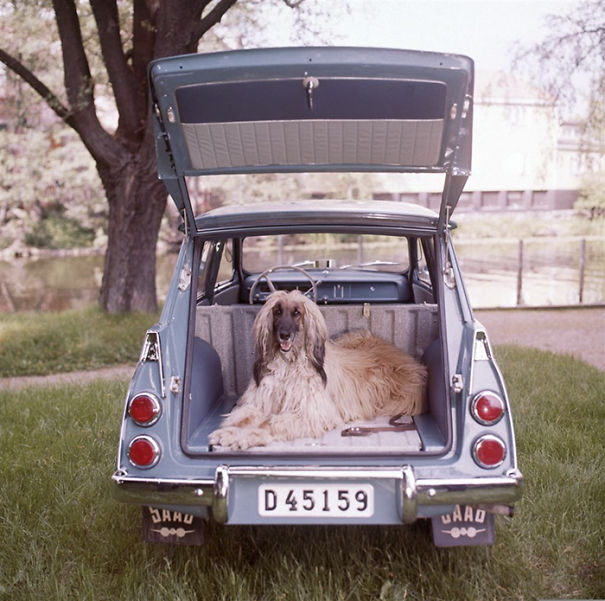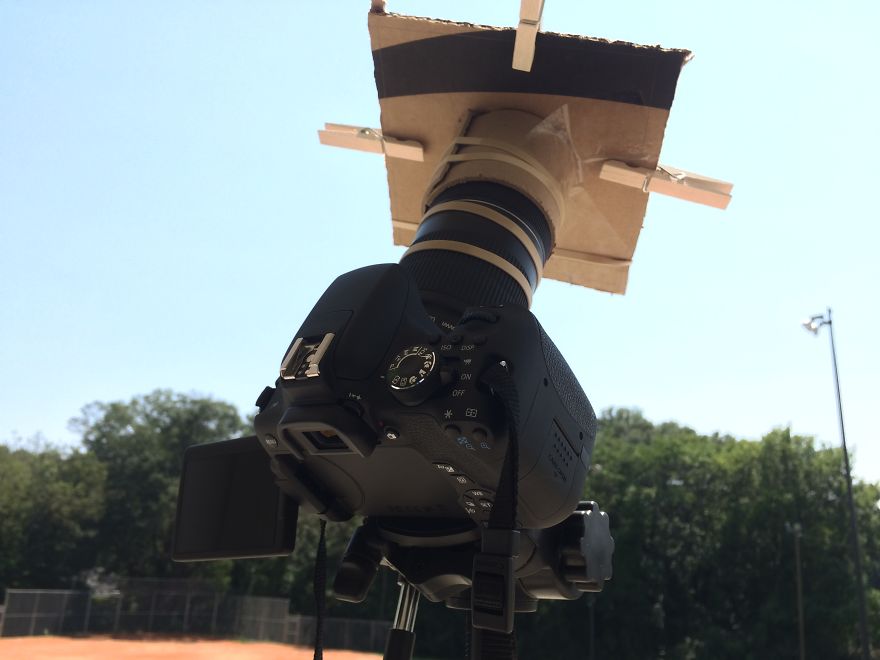
Jesse Dittmar was recently hired by The Washington Post to photograph 16-year-old TikTok star Charli D'Amelio in her parent's backyard. All photographs by Jesse Dittmar Jesse Dittmar has been photographing high-profile celebrities since late 2013.
He’s used to photographing the big names on short notice with a limited time-frame for publications like The Washington Post and The New York Times, but when COVID-19 hit, his typically busy shooting schedule dried up quickly.
Ordinarily, celebrity photoshoots require travel and large teams working together in extremely close quarters. In the month’s since COVID-19 has swept through the world, we’ve seen magazine’s like Essence and GQ asking stars to photograph themselves for features in the publications. Luckily for photographers like Dittmar, the celebrity selfie doesn’t seem like it will become the new normal in the photo world.
Dittmar photographs big names on short notice for publications like the Washington Post and the New York Times
The Washington Post recently commissioned Dittmar to photograph Charli D’Amelio – a 16-year old from Norwalk, Connecticut with over 60 million TikTok followers. She is one of the rulers of the social media platform, which she uses to share short-form videos of herself dancing in her home, lip-syncing to her family’s dogs and more recently using her influencer status to urge teenagers to stay at home during the global pandemic.
We caught up with Dittmar to learn more about his photoshoot with D’Amelio, his experience shooting in the era of COVID-19 and what he thinks celebrity shoots will be like moving forward.
This was your first shoot since COVID-19 hit the states, how did the opportunity come about?
The first shoot of the COVID-era happened earlier than I was expecting, to be honest. I thought it would be well into the summer before I was going to get that first call, but I got an email out of the blue, like I normally do. The photo editor was very understanding in the email, everybody has different levels of risk tolerance in this new era – it depends on your personal health and your family situation – a whole variety of factors. The shoot made sense for me and I was itching to make some art, because I hadn’t in so long, so it was a no-brainer to say yes.
The editor really encouraged me not to bring an assistant, keep it small, and that’s what I did
The Washington Post was very explicit about how they wanted to keep it safe. Typically for a shoot like this I’m taking at least one assistant if not two, possibly a makeup artist and a stylist. The crew for a shoot like this could easily be 4-5 people. But sometimes a shoot can even be up to 10 people. It was clear that wasn’t going to happen. The editor really encouraged me not to bring an assistant, keep it small, and that’s what I did.
What was the experience like of working without an assistant, I imagine it’s been a number of years since you’ve worked in such a stripped down way?
It reminded me of when I was first starting out doing photo shoots, early on, when I was my own everything. It wasn’t completely foreign to me, but it was a big flashback. I have not worked in that way – especially with famous people – in a long time. Typically when I know I’m photographing someone who is accomplished and whose time is short, it’s important I bring all the people. We have to execute a level of professionalism and deliver a quality product in a very quick amount of time. The way to do that is to make sure you have the support you need.
What other precautions did you take to make sure that the shoot would be safe?
Part of the deal was we were going to photograph in Charli's parent's backyard. We were outdoors the entire time, staying socially-distant and keeping six feet away from each other. I met her parents before the shoot, they came out to the back deck and we had a little chat. It was very low key, there was no one around. The only people that I saw were her family and the dogs.
It ended up being very intimate, just us in the backyard, I haven’t done a shoot like that in so long. There were no distractions
She self-styled and we went through two outfit changes. With someone like Charli, she does her own makeup. I knew what her vibe was going to be like, I liked that vibe, and I wanted the photos to capture that. We also didn’t want to make her feel older than she is. She’s a teenager, she has a clear strong visual aesthetic and a sensibility that I wanted to embrace. It ended up being very intimate, just us in the backyard, I haven’t done a shoot like that in so long. There were no distractions.
How did your technical setup change without having an assistant with you?
Because I was the one doing all the heavy lifting I was cognizant of not bringing anything that I wouldn't use. I’m not 23 years old anymore, so carrying hundreds of pounds of equipment isn’t as appealing as it once was. I made sure to pack light. Ironically, the first thing I rented was sandbags.
One of the best parts of working with an assistant is you’ve got a fully automated human brain running around with you and can make sure that stuff isn’t falling over. If you want to move a light fast and you are outdoors and you know you are only going to do that shot for 30-60 seconds, you just have an assistant make sure that light is not going to fall over.
I also rented a much longer lens than I would normally use. I’m usually shooting much closer, but for this I rented a 70-200. That and the sandbags were the big two rentals. I wanted to be as simple as possible because I didn’t have any help. I went into the shoot with the idea that I was going to use natural light if possible. I didn’t want to break out a bunch of lights and modifiers if I could help it (I still brought a light as a backup). The more stuff that you have out the more stuff that can fall over and the more stuff that can go wrong.
Ironically, the first time I rented was sandbags, I also rented a much longer lens than I would normally use
I also brought an 8 x 8ft frame, clamps, stands and bleached muslin cloth; this is a system that I use a lot when I’m photographing people against white, outdoors. The cloth interacts really well with the sun, it really absorbs the light, but also has the reflection. When I scouted out her backyard I found a spot where I knew by the time she came out, the sun was going to be coming through the trees and I could use the muslin as a projector. I thought that was a really nice effect.
When I’m shooting in a scenario like this, I’m typically trying to put my background in a shaded area which has a lot of blue sky. That provides a really nice broad luminous light source. It’s usually soft and bright, and that’s what this is, but with the added effect of the sun coming through the tree behind the backdrop.
Typically your time with celebrities is very limited, 15 or 20 minutes max, was that the case for this shoot as well?
Her publicist was treating this like it was a normal shoot, from a timing perspective. They only wanted me to photograph her for about 20 minutes, which is pretty typical. I didn’t push back while we were setting up the shoot and I was prepared for that, but I knew in the back of my head we'd likely get more time, which is what happened. All in all, I probably spent about an hour with her. I was on site for pretty much the whole afternoon to set up. I took my time with that.
Do you think your experience shooting with Charli is representative of what photoshoots will be like moving forward?
I’m expecting more photoshoots to come back later this summer and into the fall and I’m expecting shoots to be a lot more like this. Photoshoots of people are inherently risky because you are meeting people that are not in your COVID circle. I think that everyone is going to be very aware of being safe. But I think portrait sessions will happen. I don’t think all portraits will happen, but portraits like this, of personalities and newsworthy figures that are doing things that people want to read about, will. And the process in which they will be made will be very similar to my experience.
I see photoshoots up and down the spectrum of budget and production, all to be smaller
Photographers will be taking every precaution that they can and utilizing the smallest footprint and crew. I think they will be a lot more self-styling. Hair and makeup may become remote or the hair and makeup people will be super masked-up. I also think the timing of these shoots will continue to be quick. But in general I see everything happening at a more intimate, small scale, and I see photoshoots up and down the spectrum of budget and production, all to be smaller.
I think folks like myself who are used to working like this will have an easier time. I think photographers that are used to leaning on the production value heavily are going to have to make big changes in the way that their work looks and the way they physically operate, or they might be left behind.
$(document). ready(function() { SampleGalleryV2({"containerId":"embeddedSampleGallery_7590070597","galleryId":"7590070597","isEmbeddedWidget":true,"selectedImageIndex":0,"isMobile":false}) });
. dpreview.com2020-6-17 16:00



